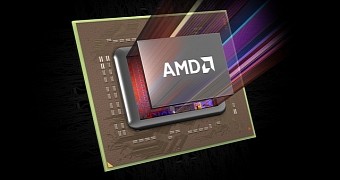AMD has announced that it had taped out its first products, which will be made using a FinFET process technology. It's very much likely that the new tape-out is a highly-anticipated microprocessor based on “Zen” micro-architecture.
Designing a microprocessor that will use FinFET process technology costs more than $150 million without paying for photomasks that are needed in such productions. Taping out means producing a small number of prototype products that test the manufacturing prowess of a company.
The process consists in designing the first artworks of an integrated circuit, then sending them to a producer of photomasks. The photomasks take several weeks to be made, and they are afterwards sent to a chip manufacturer that makes the first samples of the chip. Apparently, a FinFET will take around 90 days from wafer to chip delivery.
The real costs of manufacturing and industrial reliability, however, come when CPUs are made in large numbers. Mass production of chips nowadays starts between nine and twelve months after the initial tape-out. Therefore, if AMD managed to tape out its chips recently, they could have a high enough volume production this time next year and have its newest CPUs ready in late Q3 or early Q4 2016.
Better late than never
What remains a mystery, though, is which FinFETs were taped out. We have no details about the sort of process technology being used. We suspect it is a 14nm process technology, AMD staying in line, although a bit late, with all the major process manufacturers like Intel, GlobalFoundries and Samsung. However, AMD has in the works a Zen-based CPU with eight cores codenamed "Summit Ridge," together with the code-named "Greenland" GPU.
All these new products are expected to come using FinFETs, being the first who will mark the total move to FinFETs of all AMD products. KitGuru considers that AMD Opteron server processors and AMD FX desktop CPUs will come equipped with FinFETs as well.
As we considered before, all this effort comes a bit late, compared to the other manufacturers with IBM standing out at the forefront of transistor density development, managing to print the world's first 7nm wafer, using the still-experimental EUV.

 14 DAY TRIAL //
14 DAY TRIAL //